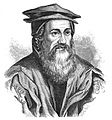Zoology facts for kids
Zoology is the science of studying animal life. It is a big part of biology, which is the study of all living things. The word "zoology" is pronounced Zō-ölogy, not Zoo-ology. It comes from ancient Greek words meaning "animal" and "study."
Zoologists are scientists who study animals. They might work in labs or do field research outdoors. They use many different ways to learn about animals. Zoologists look at how animals are built (their structure), how their bodies work (their function), how they live in their environment (their ecology), and how they have changed over long periods (their evolution).
To study animal structure, zoologists might use dissection (carefully taking apart an animal to see inside) or microscopes to look at tiny parts. They learn about how animals function by watching them closely (observation) and by doing experiments. Palaeontology is a special part of zoology that helps us learn about animals that are now extinct, meaning they no longer live on Earth. Zoologists can work at universities, museums, or zoos.
Contents
Famous Zoologists and Their Discoveries
Many amazing scientists have contributed to zoology. Here are some of them:
- Louis Agassiz (studied malacology – mollusks, and ichthyology – fish)
- Aristotle (an ancient Greek philosopher who studied animals)
- Henry Walter Bates (known for studying mimicry in butterflies)
- Buffon (a French naturalist)
- Jennifer Clack (studied how fish evolved into land animals)
- Charles Darwin (famous for his theory of evolution by natural selection)
- Charles Henry Turner (pioneering African-American zoologist who studied insect behavior)
- Theodosius Dobzhansky (a key figure in modern evolutionary biology)
- Dian Fossey (primatology – studied gorillas)
- Conrad Gessner (one of the first to try to describe all known animals)
- Geoffroy (a French naturalist who studied animal anatomy)
- Jane Goodall (primatology – studied chimpanzees)
- John Gould (ornithology – studied birds)
- Stephen Jay Gould (a paleontologist and evolutionary biologist)
- Ernst Haeckel (a biologist who studied evolution and ecology)
- Julian Huxley (a biologist and first director of UNESCO)
- Thomas Henry Huxley (known as "Darwin's Bulldog" for supporting evolution)
- Libbie Hyman (invertebrate zoology – studied animals without backbones)
- William Kirby (considered the father of entomology – insect study)
- Lamarck (an early evolutionist)
- Louis Leakey (palaeoanthropology – studied early humans and their ancestors)
- Linnaeus (the father of systematics – how we classify living things)
- Konrad Lorenz (ethology – studied animal behavior)
- John Maynard Smith (a theoretical evolutionary biologist)
- Fritz Müller (a German naturalist who studied mimicry)
- Richard Owen (a biologist who coined the word "dinosaur")
- John Ray (an English naturalist who made important contributions to taxonomy)
- E.O. Wilson (entomology – studied ants, founder of sociobiology)
- Jakob van Uexküll (studied animal behavior and invertebrate zoology)
- Alfred Russel Wallace (developed the theory of natural selection independently of Darwin)
- James Watson (co-discovered the structure of DNA)
- August Weismann (a German evolutionary biologist)
- Gilbert White (an English naturalist and pioneer of ecology)
How Zoologists Classify Animals
Zoologists group animals into different categories based on their shared features. These groups are called phyla (plural of phylum). There are at least 30 main phyla, and each one contains animals that are related to each other. For example, all animals with backbones belong to one phylum called Chordata.
Images for kids
-
Conrad Gessner (1516–1565). His Historiae animalium is seen as the start of modern zoology.
-
Linnaeus's chart of the animal kingdom from his book Systema Naturae (1735).
-
Kelp gull chicks gently peck at a red spot on their mother's beak. This makes the mother bring up food for them.
See also
 In Spanish: Zoología para niños
In Spanish: Zoología para niños





